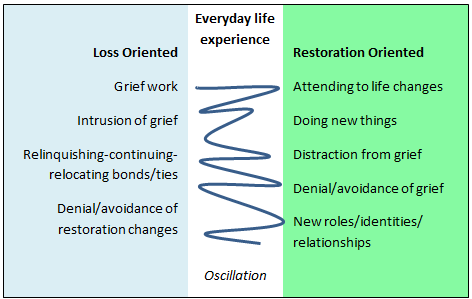By: Jonathan Morgan, RP(Q), BA Hon, MPS
To have loved another means that we feel the pain of their absence when they die. It is because we loved that we suffer. This may seem apparent, but I find it is helpful to remember when we find ourselves navigating the swamplands of grief. To love is to be vulnerable and it is through exposure to the pains of loss, that we find ourselves humbled and reminded of this once again.
Grief represents our loss and because we have loved and lost, the grief will always be with us on some level. The expression of this loss is how we mourn. All who have experienced loss, know that our path is particular to us. There are many different ways people mourn, ranging from intuitive to more instrumental means. There is no right way to mourn, but as long as we honour our process by allowing ourselves to express our grief, then over time it will feel less intense, less painful, and less persistent.


Grief is a natural process. It walks its own path that winds its way through us. For those of you who are currently facing a loss, there is a model that provides valuable insights into the grieving process. For those of you who have a past loss, this model may also be helpful in reflecting on your grief experience.
The Dual Process Model of Grief was developed by researchers Margaret Stroebe and Henk Schut in 1999. This model emphasizes the oscillation between two essential processes: loss orientation and restoration orientation. Together, let’s look at the Dual Process Model of Grief, highlighting its key components, benefits, and practical implications for individuals coping with loss.
Understanding the Dual Process Model
Loss Orientation: This involves exploring the initial phase of grief in which individuals experience and process the range of emotions associated with the loss. This includes expressing emotions, seeking support, and making sense of the new reality. It may also involve arriving at new perspectives when it comes to the ways one has been living or the relationships they are in. Something to consider is that there are those who choose to completely suppress or avoid their pain.
Restoration Orientation: Simultaneously or secondarily, people will focus on adjusting to life without the deceased or a lost aspect of self or their life (physical changes, life transitions, etc.). This involves engaging in practical tasks, creating new routines, and rediscovering one’s identity.
Oscillation and Balance
Stroebe and Schut argued that for most people, grief and mourning are experienced as an interplay between loss orientation and restoration orientation. Each individual will discover a fine balance that allows them to process their emotions while actively rebuilding their lives.
This allows a person to have respite from the pain, serves as a relief from becoming overwhelmed, maintains a sense of normalcy and functionality, and facilitates adaptation to their new circumstances. Thus, mourning that heals means being present to one’s whole experience, while giving oneself opportunities to both sidestep and surrender to the pain of loss.


(File: The dual process model of coping. (2020). Retrieved from: https://commons.wikimedia.org/wiki/File:The_dual_process_model_of_coping.png)
Practical Applications
Coping strategies for Loss Orientation: This consists of navigating the grief and may involve seeking professional support, calling in one’s social network, engaging in self-care activities, and expressing emotions through various means.
Coping strategies for Restoration Orientation: This encompasses ways to rebuild and readjust to life after loss, could include setting goals, establishing routines, and embracing new roles or interests.
Factors Influencing Grief and Mourning
Cultural differences and individual life experiences influence the unique expressions of the grief process, including how a person balances between loss and restoration orientations. Additionally, the type of loss (death, a relationship ending, the loss of physical abilities, etc.) also influences the oscillation between loss and restoration orientations.

Conclusion
The Dual Process Model of Grief is simply a framework that folks may find helpful, particularly because it incorporates our need for respite from the pain and acknowledges that there are many different ways people mourn, thereby acknowledging that the process is dynamic and unique for everyone.
The journey is tough, no doubt, but through embracing mourning and also focusing on restoration, individuals can find meaningful healing and growth.








